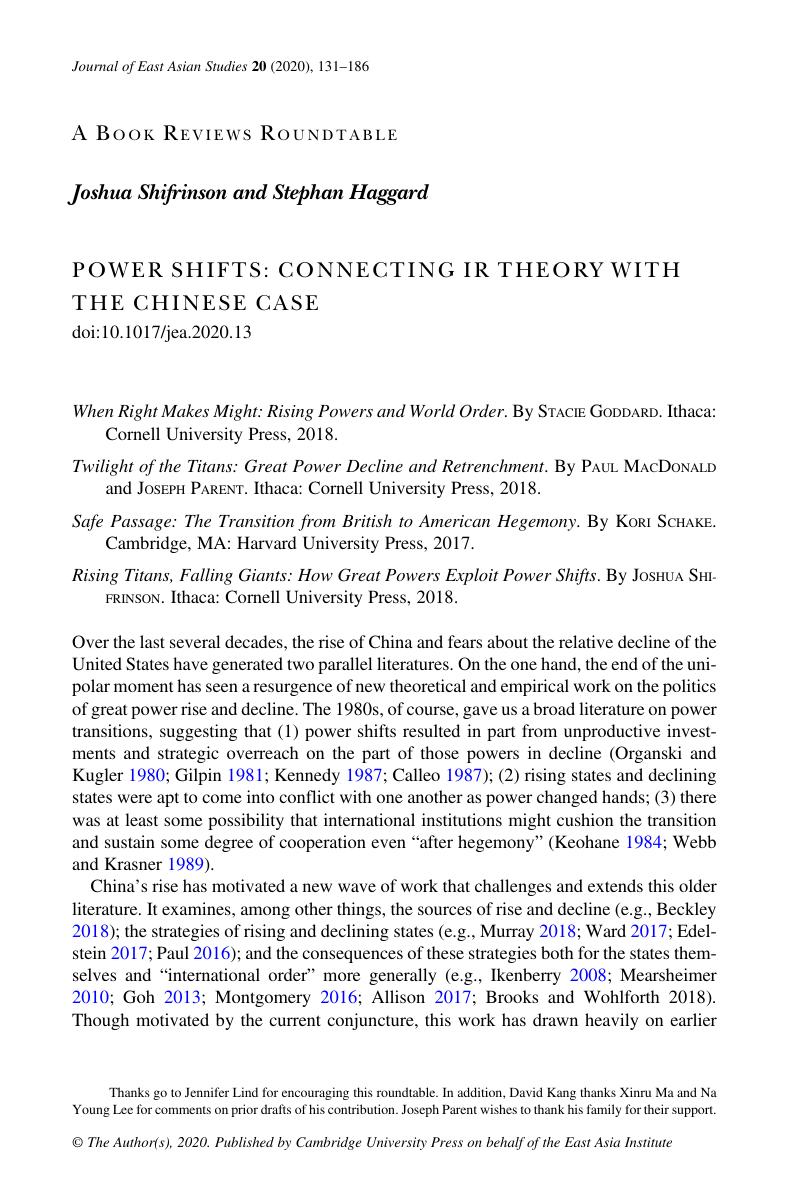Article contents
POWER SHIFTS: CONNECTING IR THEORY WITH THE CHINESE CASE - When Right Makes Might: Rising Powers and World Order. By Stacie Goddard. Ithaca: Cornell University Press, 2018. - Twilight of the Titans: Great Power Decline and Retrenchment. By Paul MacDonald and Joseph Parent. Ithaca: Cornell University Press, 2018. - Safe Passage: The Transition from British to American Hegemony. By Kori Schake. Cambridge, MA: Harvard University Press, 2017. - Rising Titans, Falling Giants: How Great Powers Exploit Power Shifts. By Joshua Shifrinson. Ithaca: Cornell University Press, 2018.
Published online by Cambridge University Press: 19 August 2020
Abstract

- Type
- A Book Reviews Roundtable
- Information
- Copyright
- Copyright © The Author(s), 2020. Published by Cambridge University Press on behalf of the East Asia Institute.
Footnotes
Thanks go to Jennifer Lind for encouraging this roundtable. In addition, David Kang thanks Xinru Ma and Na Young Lee for comments on prior drafts of his contribution. Joseph Parent wishes to thank his family for their support.
References
REFERENCES
A correction has been issued for this article:
- 2
- Cited by
Linked content
Please note a has been issued for this article.





